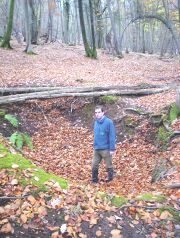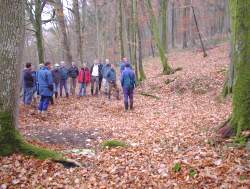 Any archaeological evidence that is located within a woodland and is directly associated with its history requires sensitive management to allow it to be preserved in an appropriate setting. Such features provide a link to the woods history and potentially that of surrounding settlements thus increasing the woods value to society.
Any archaeological evidence that is located within a woodland and is directly associated with its history requires sensitive management to allow it to be preserved in an appropriate setting. Such features provide a link to the woods history and potentially that of surrounding settlements thus increasing the woods value to society.
Woodlands, parks, forests, wood pasture and similar have a long association with human activity and many types of archaeological feature are directly related to the management of a tree-covered landscape of some kind.
Examples of historical woodland features include:
- Wood banks
- Charcoal platforms
- Saw pits
- Park pale
- Ancient coppice stools
- Veteran trees.
 Other activities such as iron production and pottery manufacture required a steady supply of wood fuel and their remains are often located in or close to existing woodland.
Other activities such as iron production and pottery manufacture required a steady supply of wood fuel and their remains are often located in or close to existing woodland.
Where historical woodland features are to be managed in a woodland context, measures will be required to reduce the risk of damage caused by windthrow, forest operations and any other associated activity. Many tree retention issues will need to be considered.
